- Register
- Log in to Tune-In
- Wishlist (0)
-
Shopping cart
(0)
You have no items in your shopping cart.
Beatles News

John Lennon was many things: A Beatle, an activist, an icon. For about a decade, he was even a New Yorker.
amNewYork spoke with Lennon and Yoko Ono's personal photographer, Bob Gruen, about those New York City years ahead of the 35th anniversary of Lennon's death.
Gruen, who photographed Lennon from 1971-1980, described the musician as "very amazing, very charismatic, very grounded, a lot of fun to be with."
He also got to witness Lennon as a father; Lennon spent five years as a stay-at-home dad after the birth of his son, Sean. Gruen said Lennon was "very attentive and very caring and very involved" in Sean's life. He made less music in those years because caring for his young son was much more important to him, Gruen recalled.
Gruen, a Manhattan-based photographer, has worked with countless music icons, from Elvis to Madonna to Bob Marley. But some of Gruen's most famous photos are of Lennon in New York City. In one series of photos from 1974, Lennon posed on the roof of his apartment in a sleeveless New York City T-shirt that Gruen had bought for him a year earlier on the street for just $5.
Gruen also photographed Lennon at the Statue of Liberty amid a deportation battle between Lenno details

An auction of more than 1,300 clothes, instruments, pieces of jewellery and other items owned by Ringo Starr has raised a total of $9.2m (£6.1m).
The highlight of the sale was a drum kit played by Starr on many Beatles hits, which fetched $2.1m (£1.4m). A Rickenbacker guitar once owned by John Lennon made $910,000 (£600,000). Starr's copy of The White Album, numbered 0000001, sold for $790,000 (£525,000) - which is thought to make it the most expensive record ever sold. Auction house Julien's Auctions said it surpassed the previous world record, set when Elvis Presley's first acetate recording sold for $300,000 earlier this year. Starr's LP was the first mono copy of The White Album to be manufactured in the UK.
It was widely known that the band members kept the first four copies, but until recently it was assumed that Lennon had owned the first. Sir Paul McCartney told his official biographer: "John got 0000001 because he shouted loudest. He said, 'Bagsy number one!'" But Starr somehow got his hands on it.
The 1968 LP was not quite in mint condition, with Starr telling Rolling Stone: "We used to play the vinyl in those days. "We didn't think, 'We'll keep it for 50 years and it wi details

For those too young to have any memories of the Beatles as a working band, but old enough to recall John Lennon’s death, Dec. 8, 1980, is our Kennedy assassination.
We remember where we were when we heard the news that day, oh boy. We remember the collective wallop to the gut, a blow we’ve never quite fully caught our breath from, even 35 years later.
For my adolescence and well into fatherhood, the events of Dec. 8, 1980, defined my life as a Beatles fan who felt an aching loss that couldn’t be filled.
But not for lack of trying: I read every book. I learned to play every song. I retraced the Beatles’ footsteps in London and Liverpool, first on my honeymoon with a woman who shares my obsession, and later with our daughter, Ella, who has been raised a Beatle baby since her birth in 1997. In some ways, we’re a family of seven.
This is the story, through a Brooklyn boy’s eyes, of the night that forever changed music. It’s the story of how my daughter taught me that Dec. 8 is a day best spent celebrating John Lennon and the Beatles. And it’s the story of a promise I plan to hold her to, many years from now.
By: Jere Hester
Source: NY Da details

"Rock & roll is here to stay!" Yoko Ono asserted on the stage of the Theater at Madison Square Garden Saturday night, telling the audience that's what her late husband would have said in response to "Imagine: John Lennon 75th Birthday Concert." Steven Tyler, Eric Church, Aloe Blacc, Willie Nelson, Sheryl Crow and Tom Morello were just a few of the multi-generational luminaries who came together onstage to pay homage to the revolutionary Beatle — the Liverpool songwriter, lionhearted political activist, peacemaker and musical treasure, who would have been 75 years old on October 9th and who died 35 years ago this month. Put on by Blackbird Presents and AMC, the show benefited the poverty-fighting organization Robin Hood.
Kevin Bacon hosted the tremendous, star-packed event — airing on AMC on Saturday, December 19th at 9:00pm ET/PT — which hit every note of Lennon's songwriting personality, his interests, concerns and loves. In the first half of the show, Sheryl Crow played a rollicking serenade of "A Hard Day's Night," the Killers' Brandon Flowers conducted an effervescent sing-along to "Instant Karma," Latin pop sensation Juanes sang "Woman" wearing Lennon's famous New York City shirt, and Tr details
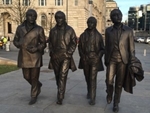
A new bronze statue of The Beatles has been unveiled on Liverpool’s waterfront by John Lennon’s sister, Julia Baird. The sculpture, gifted to the city by the Cavern Club, depicts the Fab Four walking along in front of the Cunard Building.
The idea for the statue came from Chris Butler, Managing Director of Castle Fine Art Foundry Ltd, who was inspired when walking through Liverpool One and saw the huge image of the band outside HMV. He said: “This is a statue that needs no title, no explanation, no instruments, no gimmicks. It’s a monument to a moment and the moment started in Liverpool. “In the middle of the sparkling concrete, reflective metal and polished stone were the city’s most famous sons, and their colossal presence showcased Liverpool’s love for The Beatles.”
The team at the Cavern responsible for the gift wanted it to acknowledge how instrumental the band is to the city’s fortunes and their hope is to draw fans from around the world to Liverpool to witness the new artwork down at the Pier Head.
Sculptor, Andy Edwards, thoroughly researched the piece in order to exactly capture the images of Paul, Ring0, George and John before casting them i details
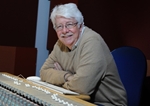
Ken Scott is a witness to music history. He was there when The Beatles made their seminal albums at Abbey Road. He was present at the birth of Ziggy Stardust. He watched Elton John create Rocket Man over breakfast.
As he recounts yet another story of rock royalty, he pauses for a moment. “You know, I’ve been in studios for the last 52 years and I’ve probably worked for a month of that time. The rest has been just sheer joy. “There are no golden moments for me. My golden moment is my entire life.”
Scott’s career as a recording engineer and producer reads like a who’s who of music. He pushed faders and twiddled knobs on some of the most celebrated albums of all time, working with John, Paul, George and Ringo both as The Beatles and into their solo careers.
Then there were the records he made with David Bowie, Elton John, Duran Duran, Supertramp and Jeff Beck. In fact, it’s a disservice to say he was merely a witness to music history – he helped forge it.
Now 68, Scott has moved back to Britain after nearly four decades in America. Living in the village of Hampsthwaite near Harrogate, he is passing on his wisdom to record producers of the f details
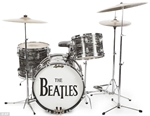
A drum kit Ringo Starr used to record some of the Beatles' early hits sold for $2.2million at a Friday auction in Beverly Hills, California, to Jim Irsay, the owner of NFL team the Indianapolis Colts. Julien's Auctions said Irsay bought the three-piece 1963 Ludwig Oyster Black Pearl kit during a two-day auction involving more than 800 items owned by Starr, 75, and his wife, actress Barbara Bach. Starr used the kit in more than 200 performances between May 1963 and February 1964.
He also played the kit on iconic recordings including Can't Buy Me Love, She Loves You, All My Loving and I Want to Hold Your Hand. The auction, which includes items like instruments and career memorabilia, concludes Saturday.
Also for sale is a guitar used by John Lennon, which the late Beatle gave to Starr. '[We] thought... we've got lots of furniture, we've got lots of cutlery... and I thought let's make it really crazy and special... like John's guitar,' Starr said at a party on Tuesday night ahead of the auction. He added: 'It's been played twice.' A portion of the proceeds will benefit the couple's Lotus Children Foundation, which focuses on global social welfare issues. Last month, Julien's Auctions sold a drum head from a k details

I spent the summer of 1968 travelling around Europe, starting and finishing in London. I was a 21-year-old New Yorker and it was the first time I’d left North America. In early September, I found myself in a B&B off Edgware Road: there were no showers or central heating, and we ate rare bacon for breakfast. It was all new to me.
On 3 September I jumped on a bus to American Express near Piccadilly to pick up my mail, and caught a bus back – the wrong one. An attractive woman sat next to me and we got chatting. Then, out of the blue, she asked, “Would you like to meet the Beatles?” I said something like, “Give me a break.” But she said: “No, this is on the up-and-up.” She worked for Apple, she said, and the Beatles were filming a promo for their new single the following night. They were looking for a crowd, and she liked my face. I didn’t believe a word she was saying. She gave me an unofficial-looking piece of paper and told me to be at Victoria station the next day at 4pm, where a bus would be waiting.
But it was all exactly as she said. We were driven out of London to a hangar – Twickenham Studios, it turned out. We were a mixed bag of people and a details

Thanks to the Beatles, you're about to witness a rare thing in the world of popular music: The celebration of an album's 50th anniversary. Specifically, the Beatles' landmark record Rubber Soul turns 50 on December 3.
If you're wondering why this has seldom happened, it's because the concept of rock or pop albums as self-contained art forms is relatively young. Rubber Soul was one of the first records to present itself as a holistic entity, rather than a partly or completely arbitrary compilation of songs. That, in and of itself, is a big reason its anniversary should be revered. Rubber Soul is a big reason music lovers now enjoy endlessly discussing their favorite albums and debating which are the best.
Over the next several years, you can bet you'll read about the 50th anniversary of many other albums--thematic volumes composed by bands or songwriters in the tradition Rubber Soul established. All of which is to say: Rubber Soul, the Beatles' sixth studio album, was the record that launched a thousand ships. Here are three creativity lessons you can cull from its success and longevity:
1. Practice and focus can make tight deadlines seem generous.
The Beatles recorded the entire album in four wee details

Growing up in the 1970s, Sergeant Pepper cast a long shadow not only over the Beatles career, but the whole of pop. With only 20 or so years of rock’n’roll to look back on, it was seen as an insurmountable achievement; fast forward to the 1990s and Pepper’s crown was tarnished – by now Revolver was seen as the Beatles’ peak, with the Beach Boys’ Pet Sounds most frequently cited in an increasing number of “best album ever” polls. The White Album – disjointed in 68, more cohesive in the digital era – now often takes the accolades. Maybe it’ll be Let It Be’s turn soon.
All of which is harsh on Rubber Soul. For a start, it had been the guiding light for Brian Wilson on Pet Sounds, the album that spurred him on to overtake his Transatlantic rivals. While Frank Sinatra had put together albums that had a unified mood back in the mid-50s, no one had done it in the modern pop era. Rubber Soul may have had no obvious lyrical chain, but with George Harrison’s astringent guitar, some heavily compressed piano, and a thread of black humour, it was the first album of the rock era that sounded like an album, as much a concept as Sinatra’s Only the Lonel details
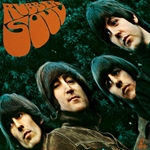
‘Plastic soul’, a description used by black musicians of the time to describer Mick Jagger – a white man singing soul music – warped by Paul McCartney into ‘Rubber soul’ (also a play on rubber soled-shoes), finally finding its rightful home as the title of the Beatles’ sixth studio album.
Regarded by many as the first album to truly cement the band’s musical maturation, Rubber Soul is an curious mix of the Beatles’ influences up until this point: pop, folk rock, R&B and the first stirrings of psychedelia. Knocked up just in time for the Christmas market, the album climbed to the top of the charts (replacing The Sound of Music soundtrack) and chilled out there for 42 weeks.
Fifty years on, we take a track-by-track look at the album to see if it stands the test of time.
‘Drive My Car’ The first version of the lyrics for the McCartney-penned ‘Drive my Car’ were blasted as ‘crap’ by Lennon and, in truth, they were. ‘You can buy me golden rings’ worried the pair that they’d fall back on to lazily rhyming ‘rings’ with ‘things’, so, after a ciggie break, ‘baby, you can dr details

Happy 50th birthday to Rubber Soul, the album where the Beatles became the Beatles. It was the most out-there music they'd ever made, but also their warmest, friendliest and most emotionally direct. As soon as it dropped in December, 1965, Rubber Soul cut the story of pop music in half — we're all living in the future this album invented. Now as then, every pop artist wants to make a Rubber Soul of their own. "Finally we took over the studio," John Lennon told Rolling Stone's Jann S. Wenner in 1970. "In the early days, we had to take what we were given, we didn't know how you could get more bass. We were learning the technique on Rubber Soul. We were more precise about making the album, that's all, and we took over the cover and everything."
Rubber Soul was the album where the moptops grew up. It was also where they were smoking loads of weed, so all through these songs, wild humor and deep emotion go hand in hand, like George Harrison and cowboy hats. (No rock star has ever looked less stupid in a cowboy hat than George on the back cover.) In addition to everything else it is, Rubber Soul is their best sung album. You can have a great time just focusing on the background vocals: Paul McCartney's harmonies o details

Sir Paul McCartney has been praised for the way he respects his fans, by Then Jerico frontman Mark Shaw.
The 'Big Area' singer unexpectedly bumped into the Beatles legend whilst walking in London and was amazed to see McCartney, 73, on his own happily chatting to his admirers and signing autographs in the street.
Shaw admits it was very refreshing to see a musician as famous as McCartney - who is married to Nancy Shevell - being so generous with his time especially when he doesn't need to be due to his lauded position at the top of the music world.
Speaking about his recent experience with the 'Yesterday' songwriter, the 54-year-old rock star told BANG Showbiz: "I saw Paul McCartney the other day in Soho. He was being photographed and asked for autographs by a couple of fans and he saw me and I looked at him and said, 'Looking really cool Sir Paul,' and he nodded and that was nice moment. I thought it was lovely that he still has the time to stand in the middle of the street with no security and talk to people and spend the time of day."
Source: Inside Toronto
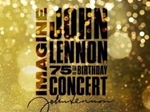
Rock & Roll Hall of Famer and Grammy Award-winner John Fogerty and Spoon added to the star-filled lineup of artists taking part in IMAGINE: JOHN LENNON 75TH BIRTHDAY CONCERT, an all-star concert event celebrating the music and message of the legendary music icon. The one-night-only concert event taping will be held at the Theater at Madison Square Garden on Saturday, December 5th at 7:30pm ET, and air exclusively on AMC on Saturday, December 19th at 9:00pm ET/PT.
The concert event and broadcast premiere will also include very special video appearances by the remaining members of The Beatles, Paul McCartney and Ringo Starr. Golden Globe and Screen Actors Guild Award-winner Kevin Bacon will join as the special guest host of this star-filled event.
Also announced today is the all-star house band featuring: Greg Phillinganes (Stevie Wonder, Eric Clapton) on keyboards, drummer Kenny Aronoff (John Mellencamp), bassist Lee Sklar (James Taylor), Felicia Collins and Sid McGinnis (Paul Shaffer CBS Orchestra) on guitars, along with keyboardist Boh Cooper, percussionist Taku Hirano, and backing vocals Jory Steinberg, and Trya Juliette.
Source: Broadway World

Thirty-five years ago, on December 8, 1980, John Lennon was murdered outside his Dakota apartment by Mark David Chapman. Lennon, a brilliant artist and complex man, was witty, ornery, and haunted, exploring his life through his art. Lennon remains an influential part of our culture. His song "Imagine" has become a timeless plea for peace.
Because his early life and half of his artistic career was so interwoven with the Beatles, I've included several biographies of the Beatles as well, which show the evolution of the group and the interactions of the members, especially the genius writing team of Lennon and Paul McCartney.
1. John Lennon: The Life Philip Norman
Norman, whose 1981 classic Shout! is considered the definitive biography of The Beatles, returns with John Lennon: The Life. It's an intimate look at the troubled genius who, with other Beatles members, changed the shape and sound of popular music. The book takes us from his early Liverpool days and childhood tragedies through the roller-coaster ride that was The Beatles. It studies his post-Beatles career, his turbulent marriage to Yoko Ono, his peace crusade, and his murder. Monitor critic Lorne Entress called it " wonderful unfolding of Lennon's details
